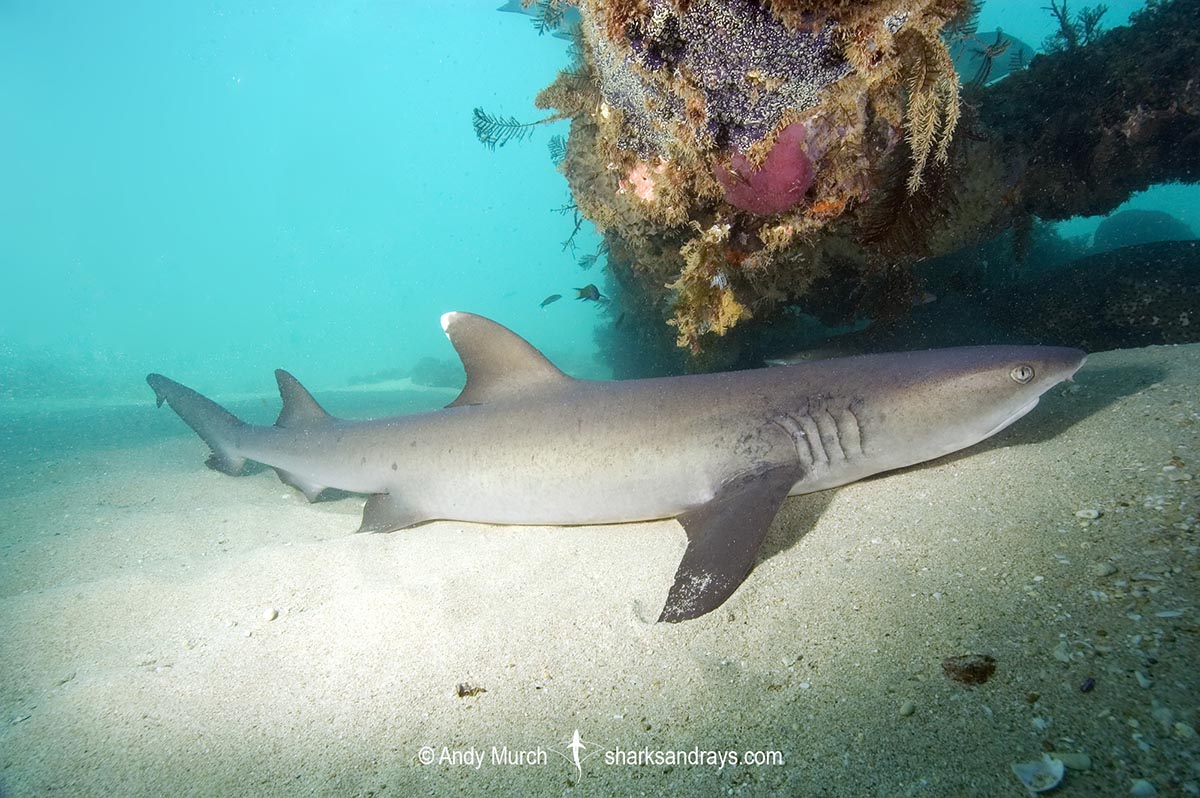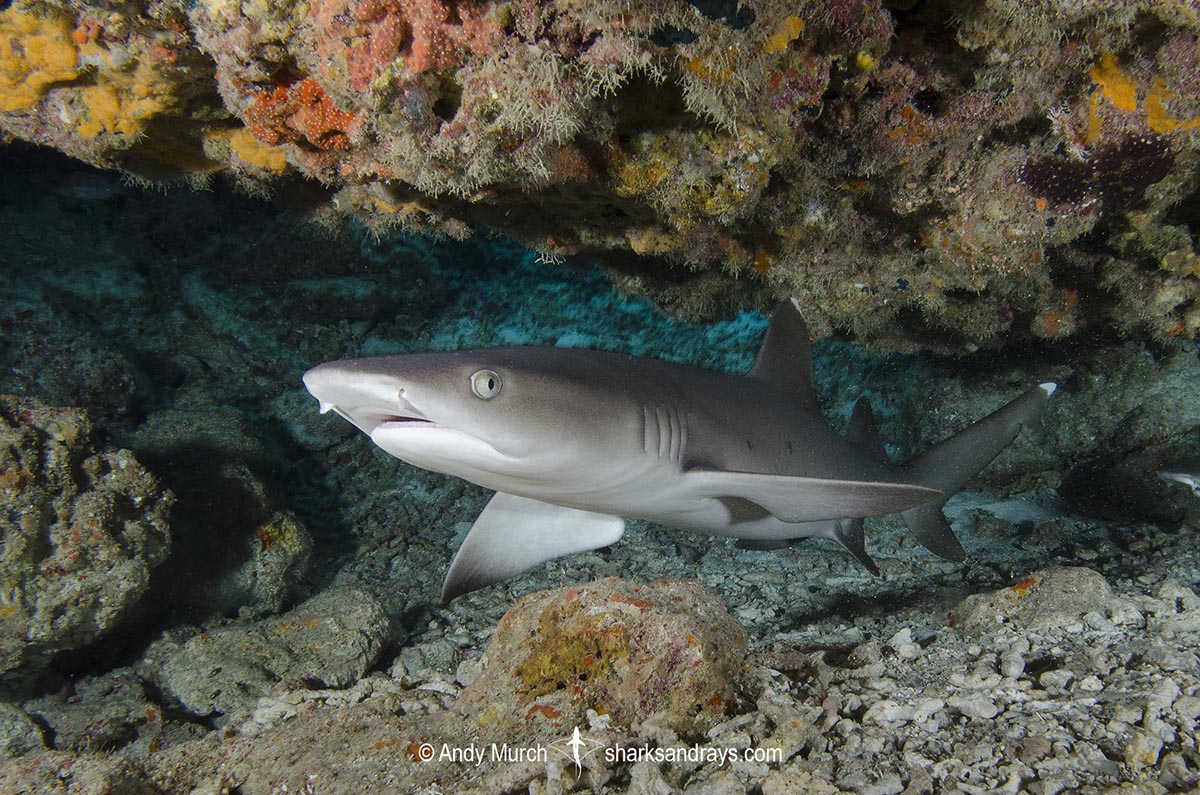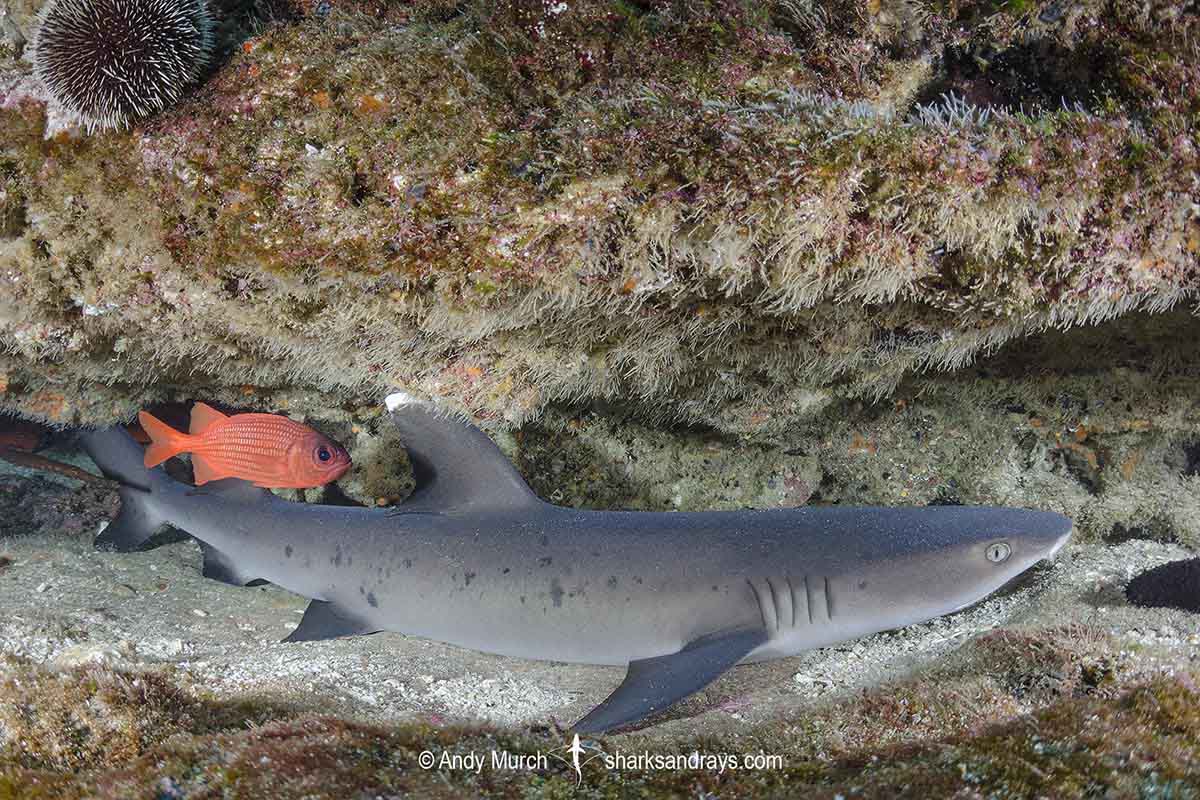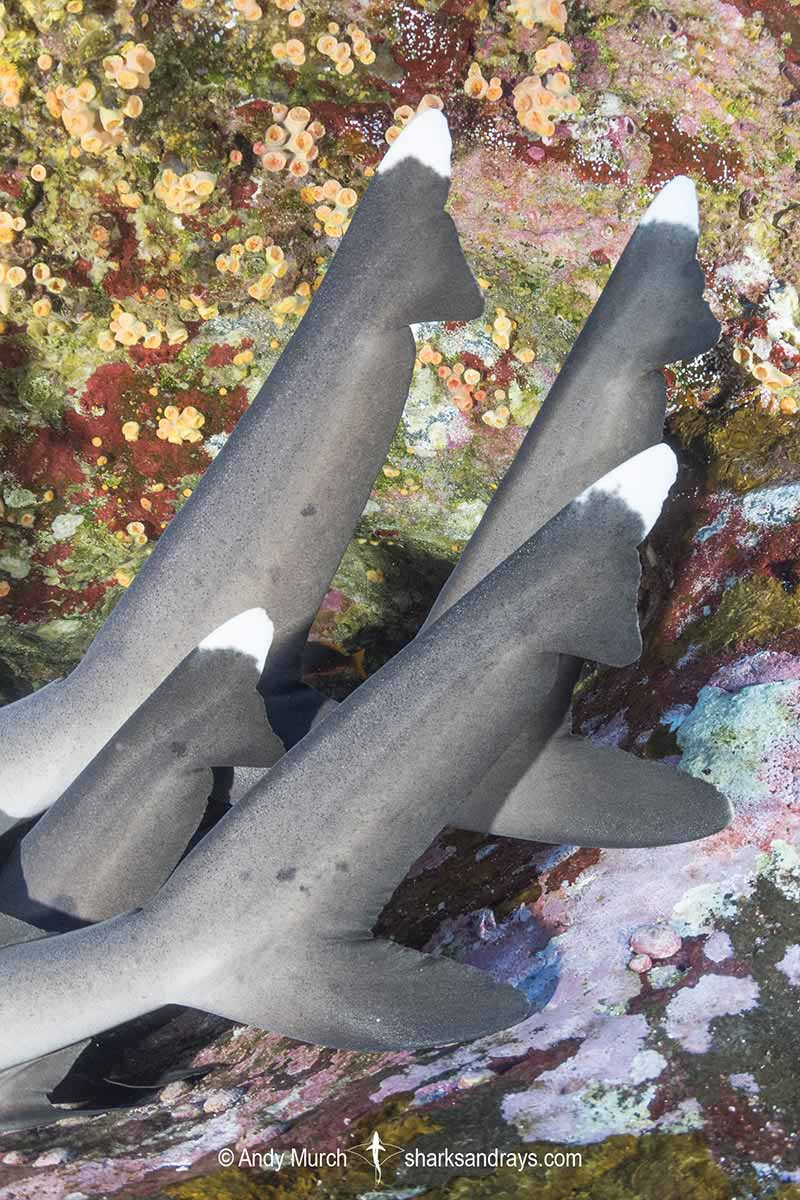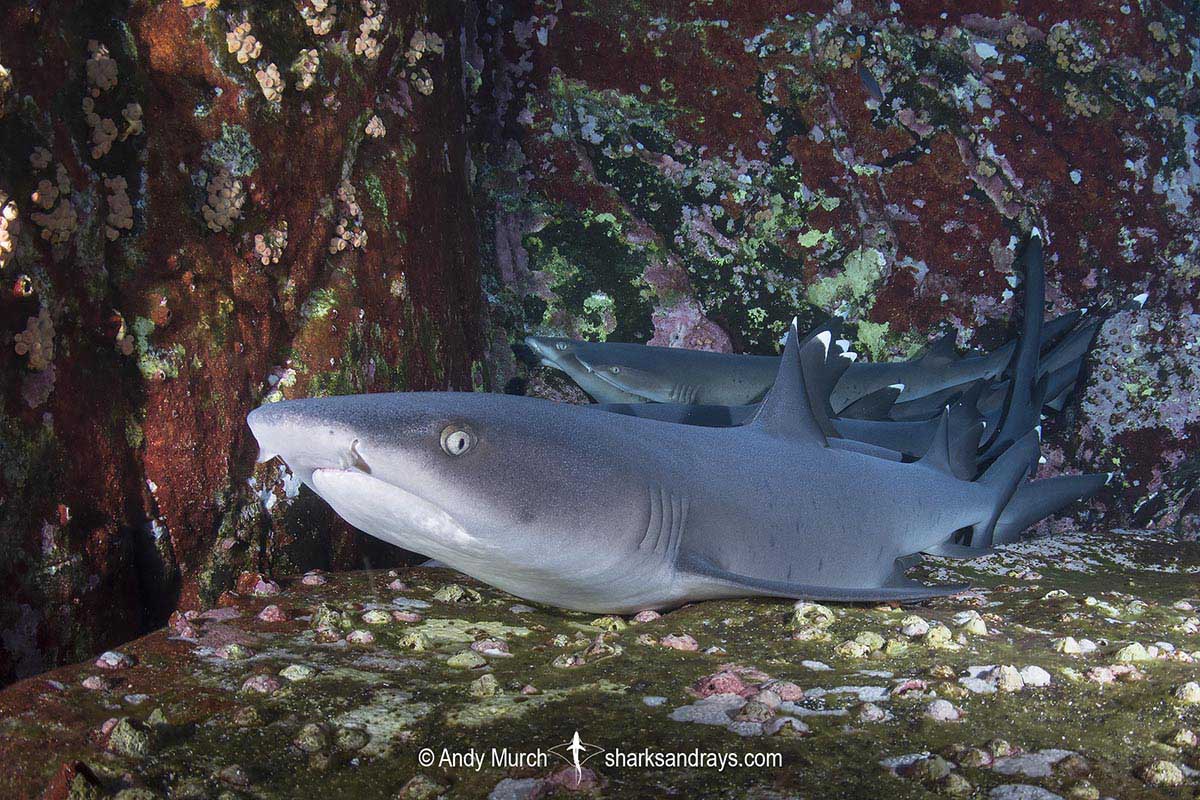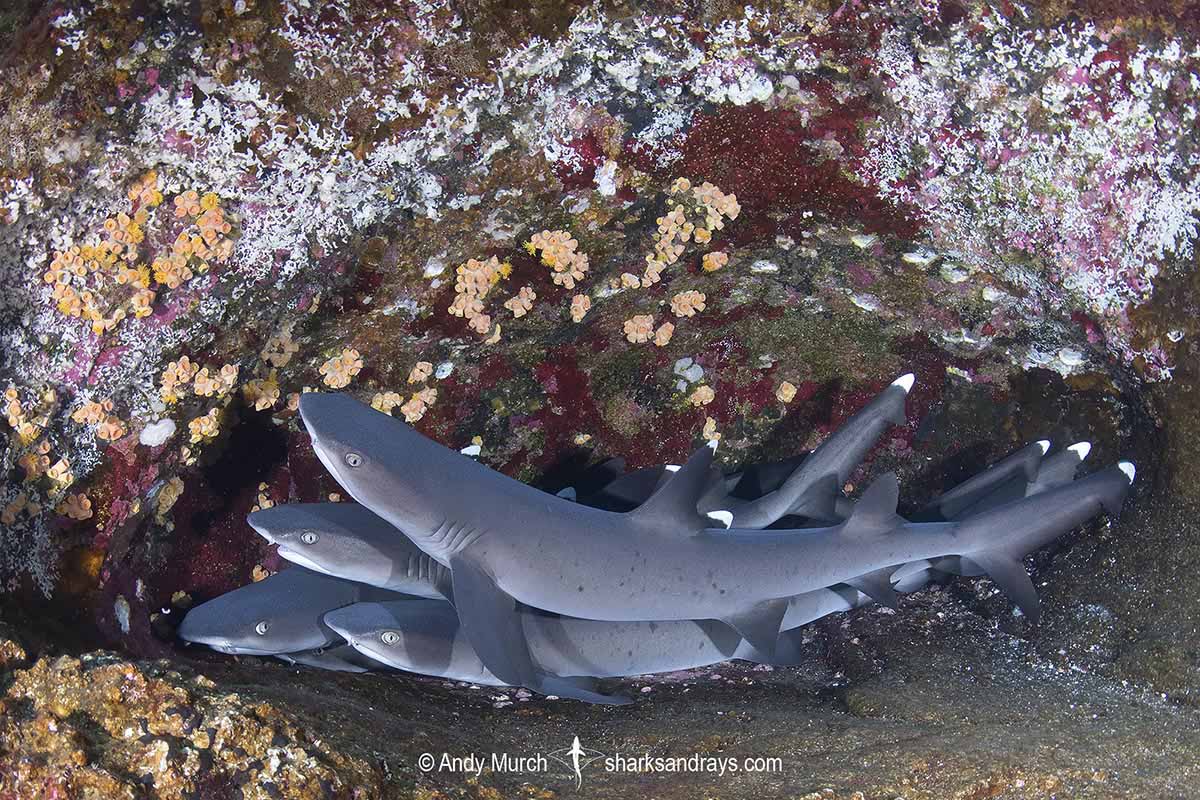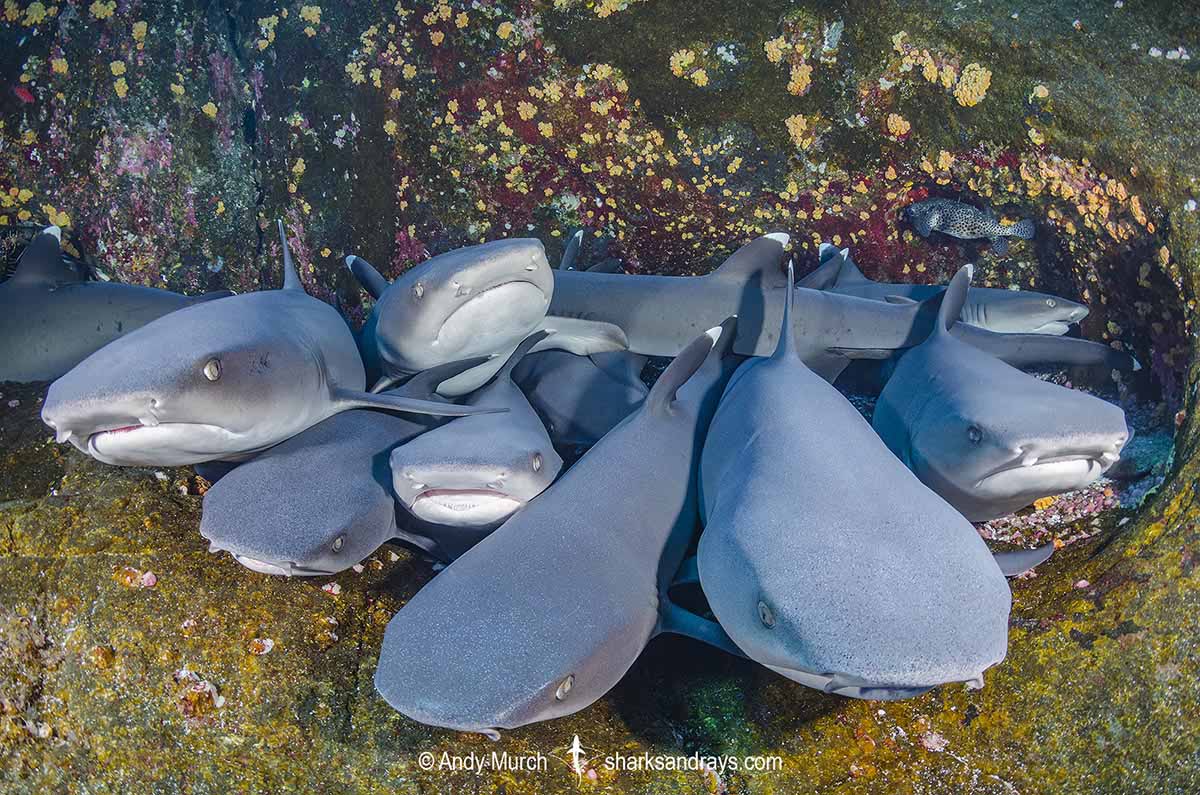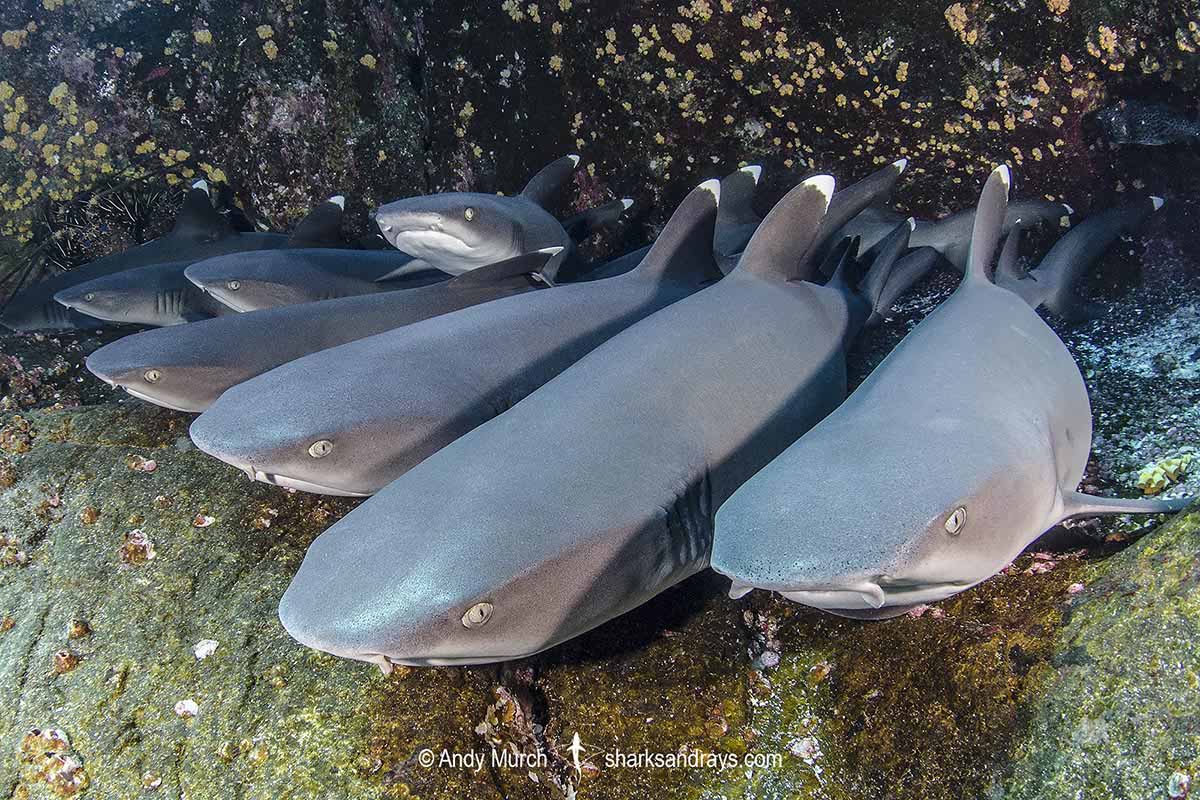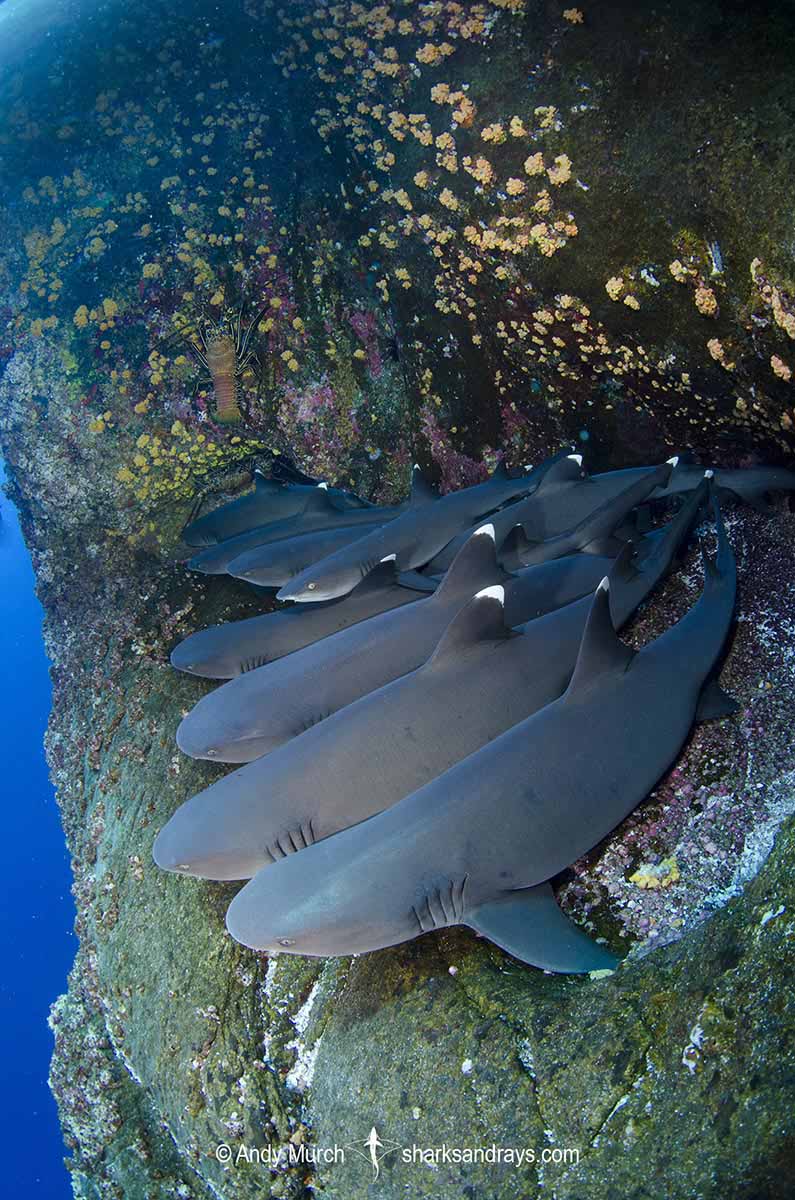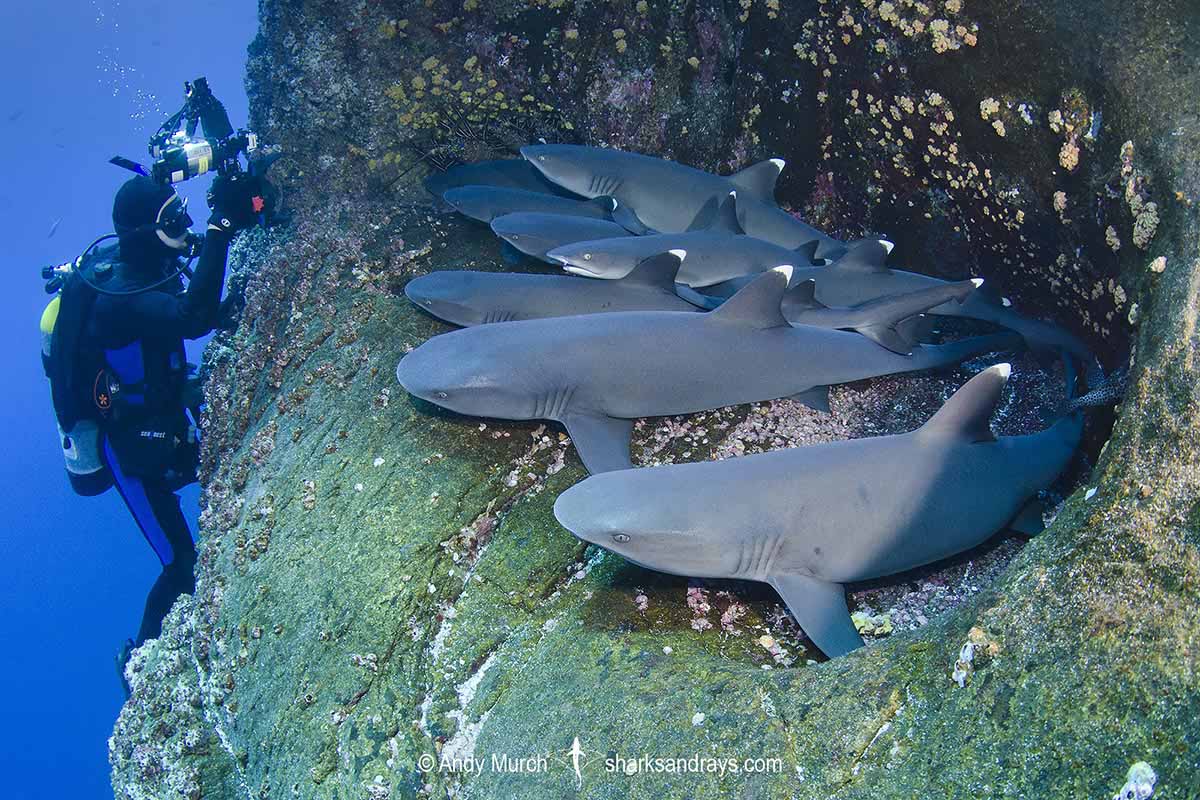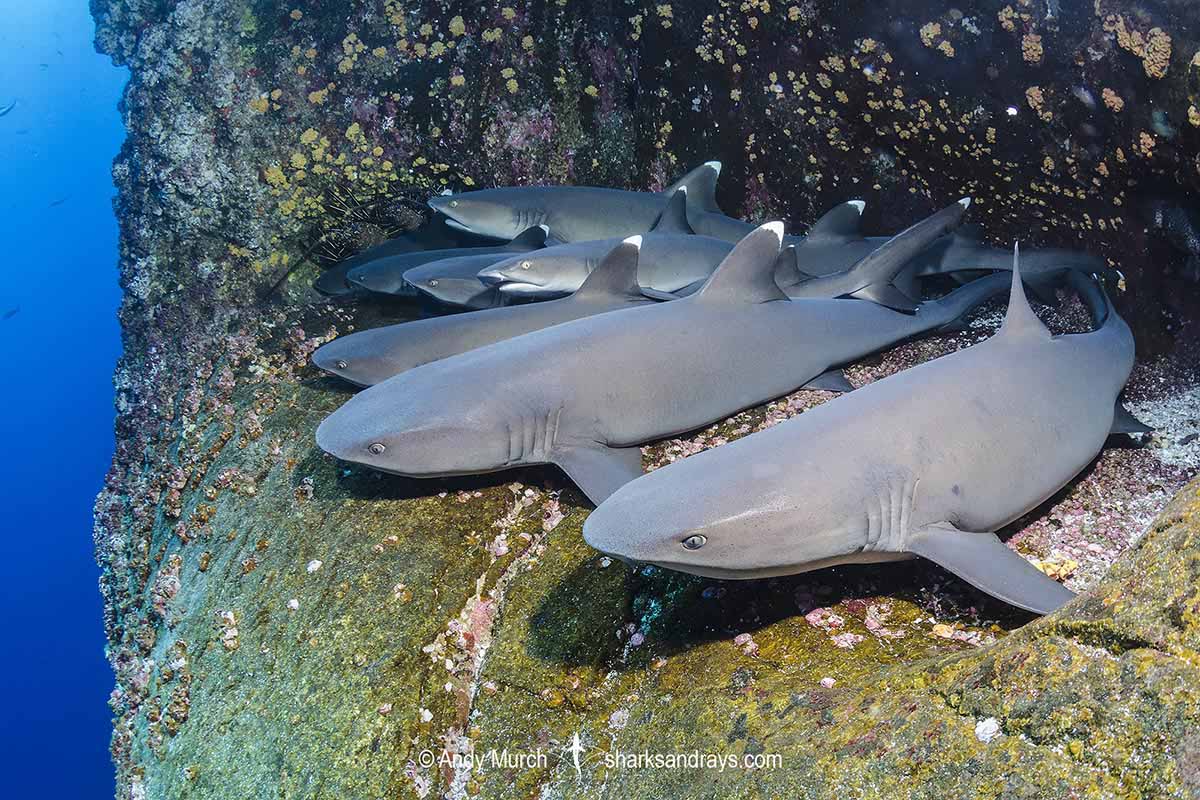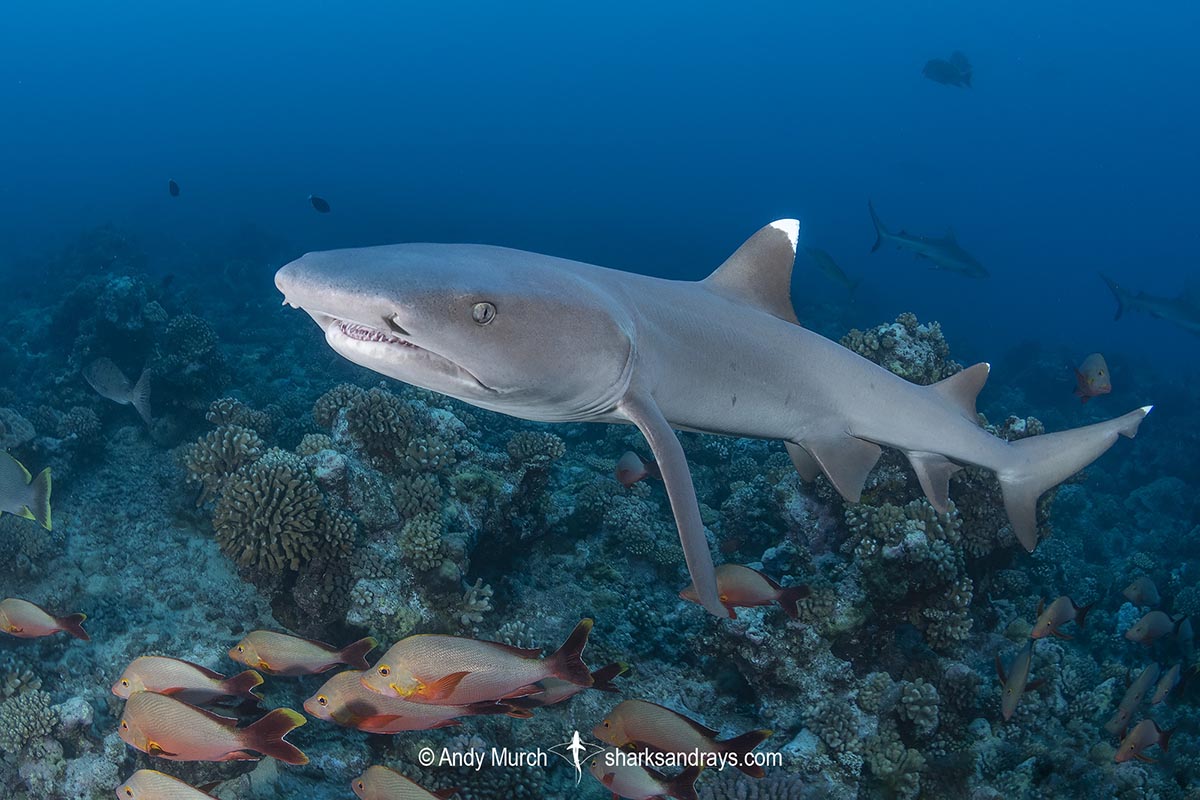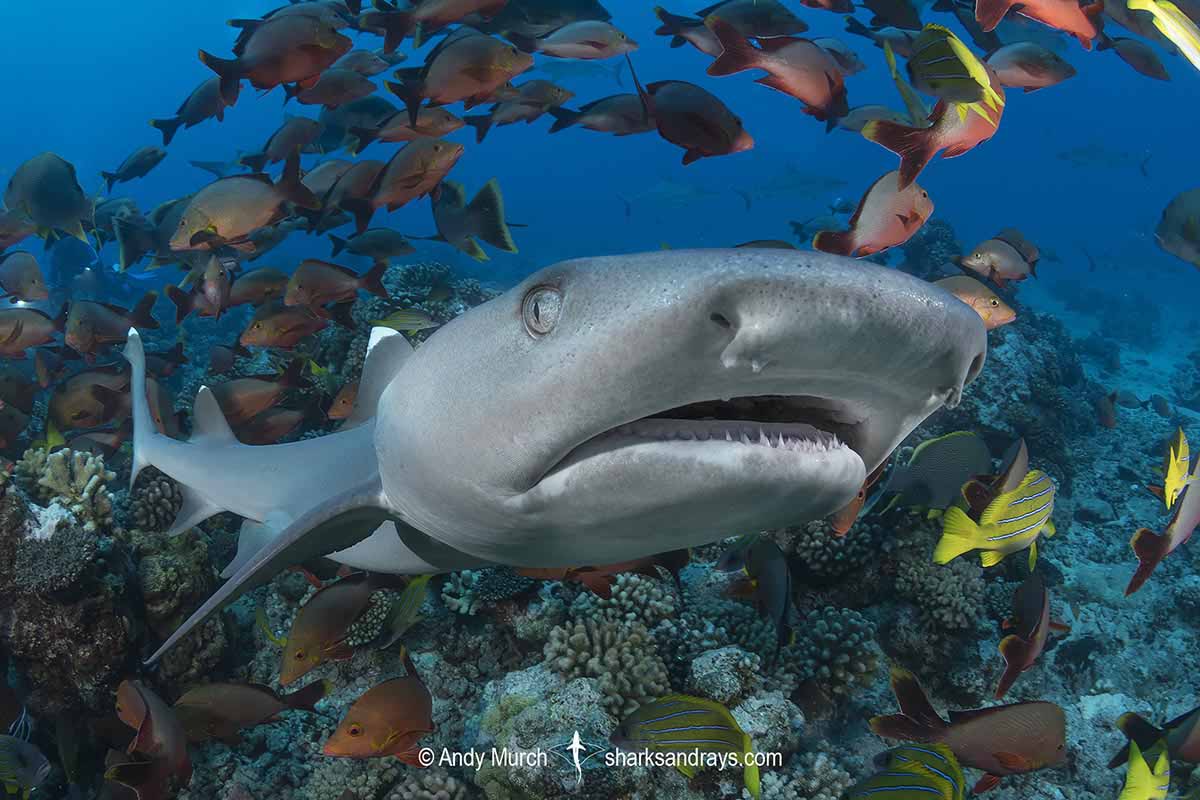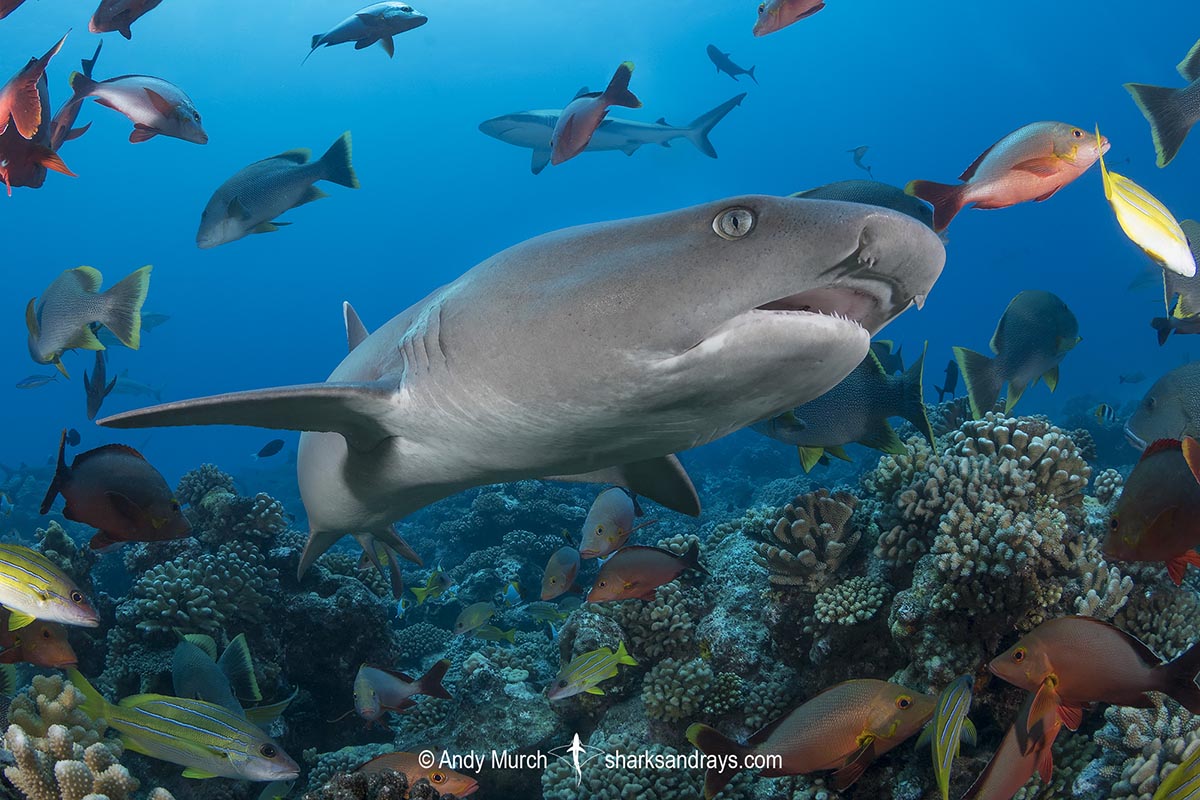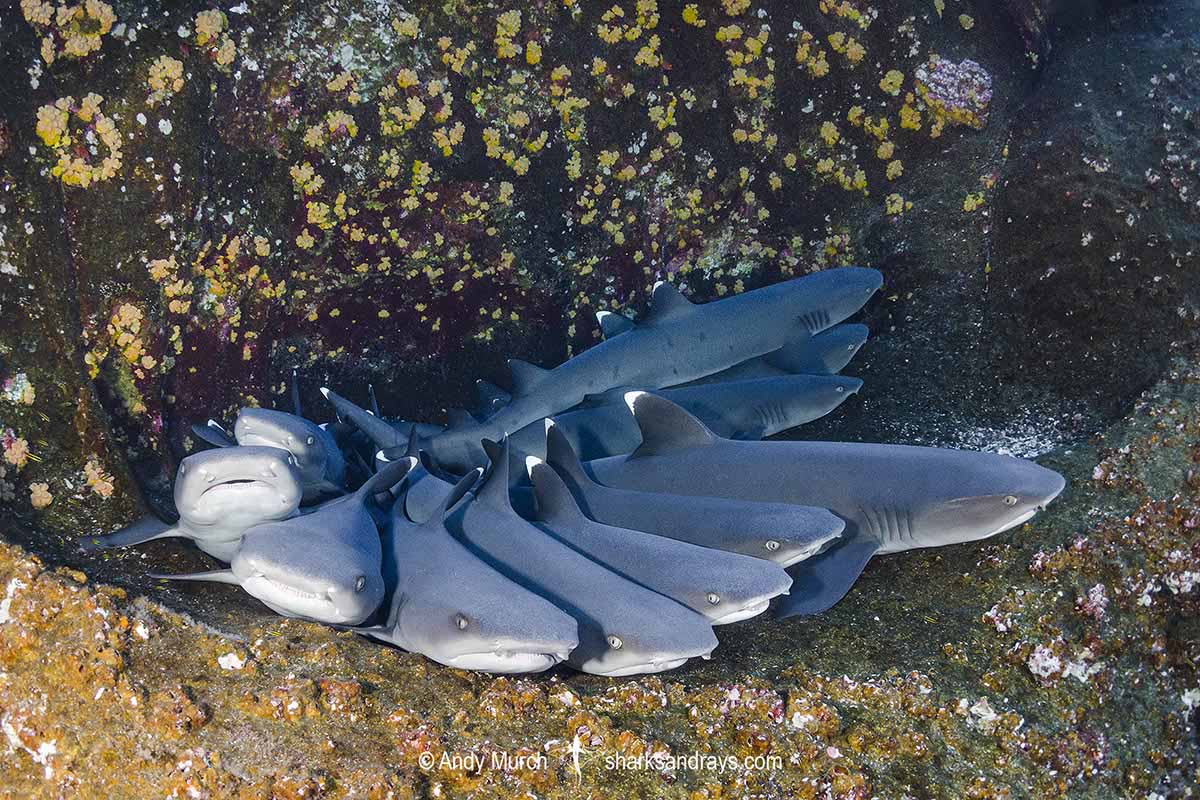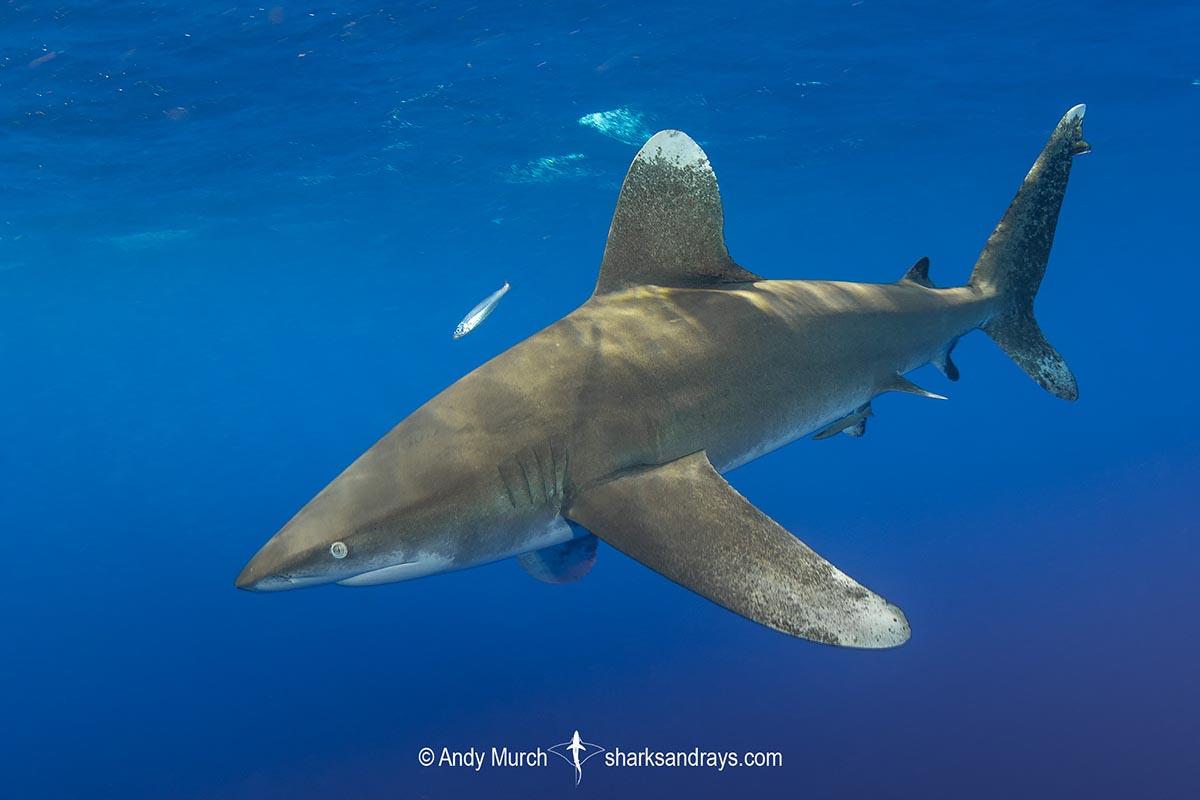Common names
Whitetip Reef Shark.
Binomial
Triaenodon obesus.
Synonyms
Carcharias obesus, Traenodon obesus, Triaenodon apicalis, Trianodon obesus.
Identification
A small, slender requiem shark. Short, bluntly rounded snout. First dorsal origin midway between pectoral fin free rear tip and pelvic fin origin. Second dorsal fin over anal fin. Dorsal fin apexes rounded. Second dorsal fin large. Anal fin large. Dorsal coloration grey, brownish grey, or blueish grey, with or without scattered dark spots. Ventrum white or light grey. Fins often dusky. Bright white tip on first dorsal fin, upper caudal lobe and sometimes lower caudal lobe.
Size
Maximum length 168cm. Size at birth 52-60cm.
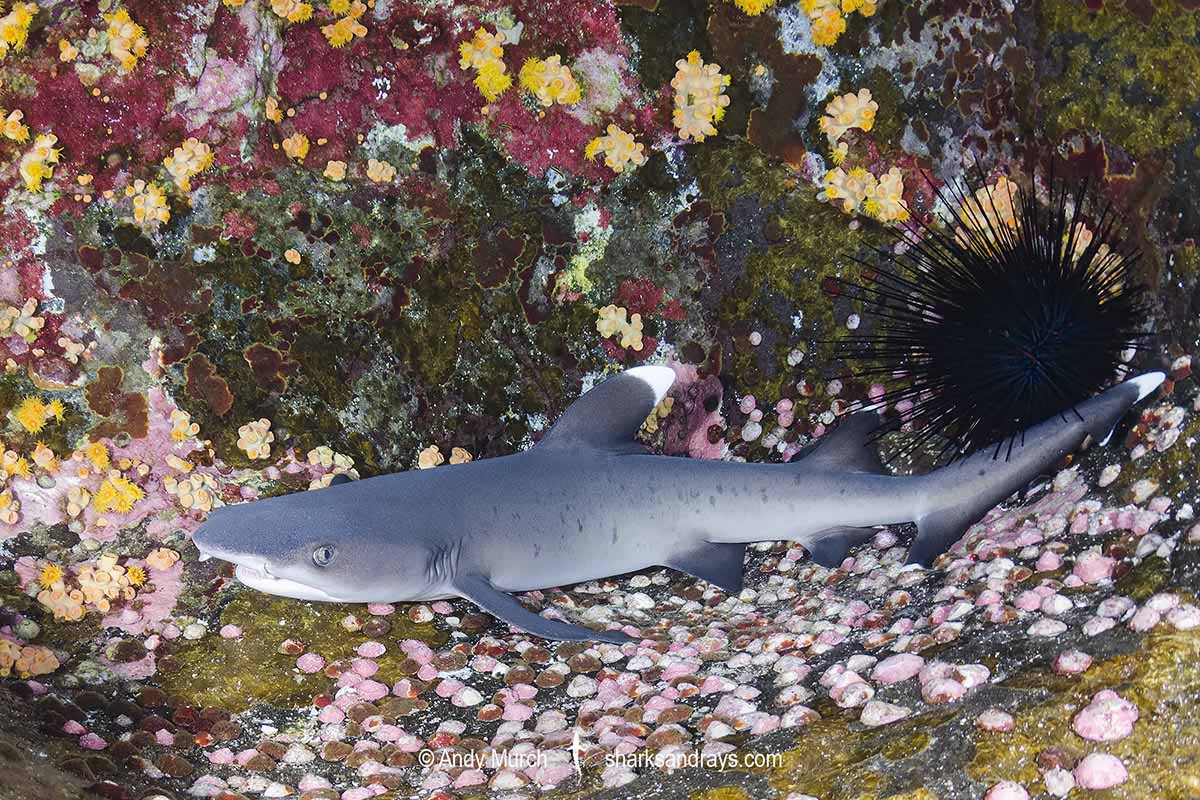
Conservation Status
VULNERABLE
Although widespread and relatively abundant, the whitetip reef shark is caught as target and bycatch through much of its range using longline, gillnet, hand line, and trawls, and is often retained. It is also impacted by reef deterioration from climate change and destructive fishing practices.
It is estimated that Whitetip Reef Shark populations have been reduced by 30–49% over the past three generations.
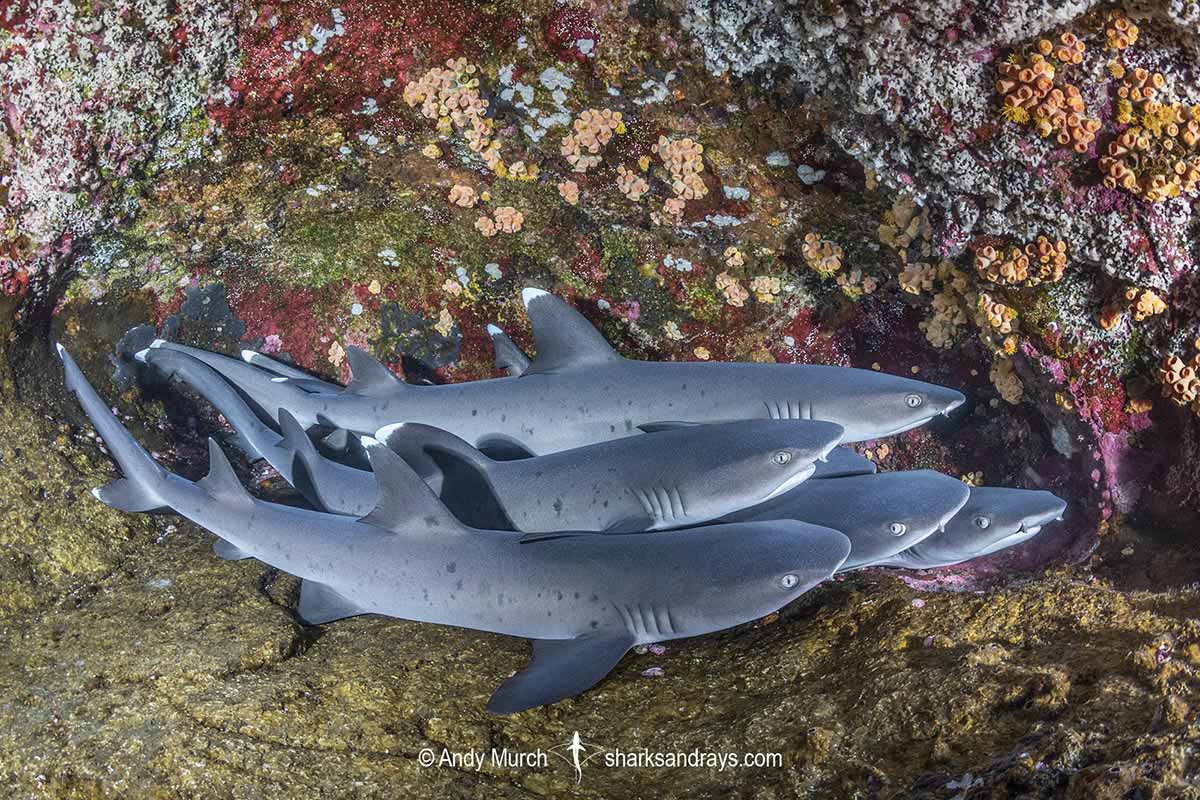
Habitat
Tropical Reefs and associated sand flats. From the surface to 330m but usually found between 5-40m.
Distribution
Whitetip reef sharks are extremely common throughout the tropical Indian Ocean and west/central Pacific. They have a limited range in the Eastern Pacific and are absent from the Atlantic although they have been seen in the eastern Mediterranean having entered through the Suez Canal.
Reproduction
A viviparous species with yolk-sac placenta. 1-5 pups per litter. Whitetip reef sharks have been seen in the process of mating numerous times by divers and researchers. While in a stationary position on the sea floor, the male bites the female’s pectoral fin and inserts one clasper.
Diet
Whitetip reef sharks predate on numerous small reef fishes, octopuses, and crustaceans.
Behavior
Active nocturnal hunters. By day, whitetips rest (often in groups) in caves, crevices, on rocky ledges, or on the sand at the bottom of channels. They are non-migratory, often returning to the same resting site each morning.
Reaction to divers
Quite tollerant of a slow non-threatening approach while at rest. They will bolt if approached too closely.
Diving logistics
There are an overwhelming number of places where whitetip reef sharks can be encountered throughout the Indo-Pacific.
In the Eastern Pacific, one of the most interesting spots to watch them is at Roca Partida within Mexico’s Revillagigedo Archipelago. RP a small, rocky monolith standing in 70m of water, 60km from any other island. During the day, whitetips rest on a series of ledges between 10-20m. Space is limited so this is a great place to photograph them piled on top of each other.
Another interesting spot is at a dive site named Manuelita at Cocos Island, Costa Rica. During night dives at this spot, scores of whitetips follow divers around, hunting for reef fishes that are lit up by the diver’s lights.
Whitetip reef sharks are very common around the volcanic islands and atolls of French Polynesia. At the south pass of Fakarava Atoll, the show is dominated by hundreds of grey reef sharks but at the bottom of the channel, there are usually groups of whitetips laying on the sand, facing into the current.
Similar species
Oceanic Whitetip Shark Vastly larger, with long spatulate pectoral fins. Never seen resting on the substrate.

